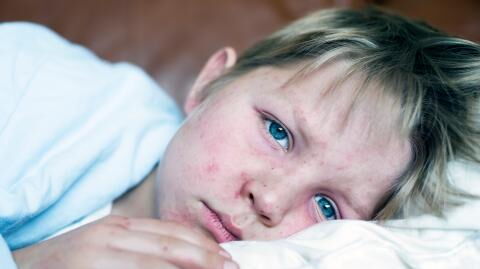Winter is almost here and already the healthcare system is struggling to contain what experts are calling the ‘triple threat’ virus season as a combination of Covid-19, flu and respiratory syncytial virus (RSV) cases risks overwhelming hospitals. And now it looks like parents would have to worry about scarlet fever, a bacterial infection which is making a strong comeback after many years of low transmission. Health authorities in the UK are advising parents to look out for certain symptoms of the disease in their children.
Discover our latest podcast
Scarlet fever symptoms
A threat posed by this disease is that it starts off with flu-like symptoms including a fever, sore throat and a large lump on the side of your neck, according to the NHS.
A rash appears 12 to 48 hours later. It looks like small, raised bumps and starts on the chest and tummy, then spreads. The rash makes your skin feel rough, like sandpaper.
The rash may look pink or red on white skin but harder to detect on black or brown skin, although you may still be able to feel it.
The health service regulator also mentioned that a white coating on the tongue is another sign of scarlet fever. This peels, leaving the tongue red, swollen and covered in little bumps.

When to be concerned
The rash and the redness in the face and tongue usually last about a week, according to the Mayo Clinic. After these signs and symptoms have gone away, the skin affected by the rash often peels. However, if the above symptoms are followed by any of the following, you should see a doctor immediately.
- Difficulty breathing, shortness of breath at rest and/or rapid breathing
- Noisy, wheezy or raspy breathing that does not clear with coughing accompanied by chest pain
- Inability to swallow liquids or saliva, muffled voice, or inability to open mouth fully
- Confusion, lack of energy, or inability to stay alert and awake
- Dizziness when sitting or standing
Scarlet fever is typically treated with antibiotics.
Sources used:
NHS: Scarlet fever overview
Healthline: Scarlet Fever
Mayo Clinic: Scarlet fever















